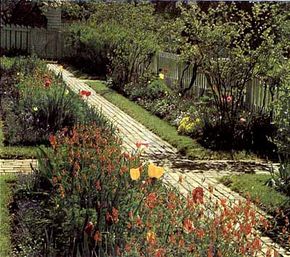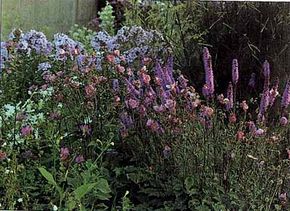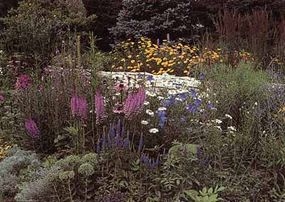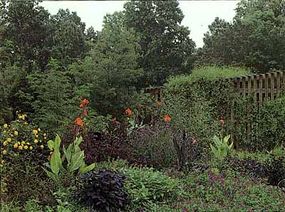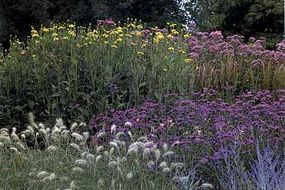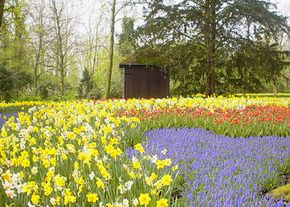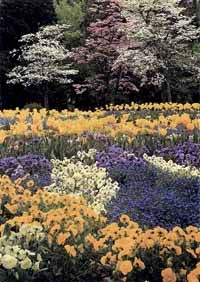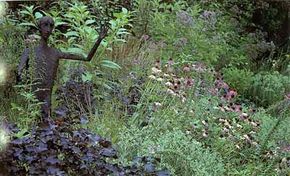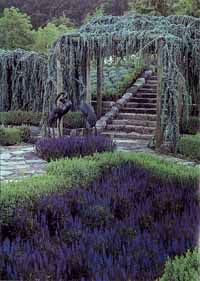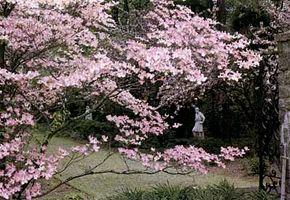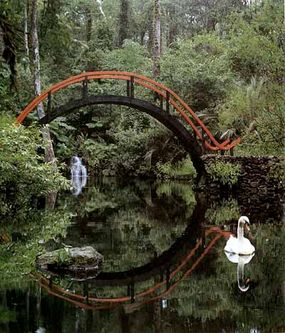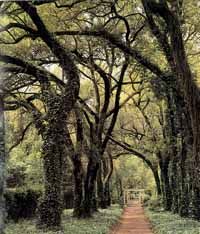The English country garden look relies on a pleasing combination of formality and informality that uses tastefully planned color schemes and artwork as a counterpoint. An English country garden might contain a formal carpet bed, an avenue of pleached limes, an ornamental pond and fountain, and a well-filled perennial border. Often statuary, containers, or other ornaments are used to offset the garden plan.
Although these ideas may sound grand, they may also be scaled down to a more backyard-friendly format. A mixed planting of bulbs, annuals, and perennials surrounding a sundial or birdbath flanked by a pair of rose trees would make a lovely display that requires only the smallest of spaces. The English country garden ideas and garden photos that follow will explore an assortment of common English country garden features and should help get you on the way to your own spot of England right outside your door.
Advertisement
Famous Gardens Image Gallery
Eighteenth-century elegance still thrives among the restored buildings, brick pathways, and white picket fences of Colonial Williamsburg, Virginia. American gardens during that era took their cue from the formality prevailing in the gardens of England and France, and the results are perfect examples of English country gardens. Forget-me-nots here give a dainty azure edging to rectangular beds planted thickly with spring favorites such as tulips, wild columbine, bleeding heart, and basket-of-gold alyssum.
Ready to transform those empty beds into a bounty of blooms that will return year after year? Continue to the next page for ideas on planting perennials in true English country style.
If you're feeling inspired by the English countryside, don't stop now. Gather more garden ideas as you peruse the following:
- Color Theme Garden Ideas
- Cottage Garden Ideas
- Foliage Garden Ideas
- Fragrant Garden Ideas
- Garden Ideas
- Gardening
- Habitat Garden Ideas
- Natural Garden Ideas
- Rock Garden Ideas
- Traditional Shade Garden Ideas
- Water Garden Ideas
Advertisement
